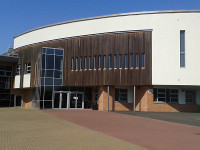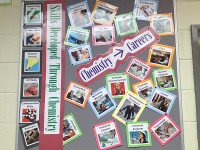Stirling, May 2016
The sixth partner meeting took place between 8th and 11th May in Alloa, near Stirling. The location of the meeting was Gean House, (http://www.geanhouse.co.uk) which is owned by Ceteris, the local enterprise organisation who work with the Scottish partners. This is a beautiful mansion house built in the early part of the 20th century and is used as a wedding and conference centre. Due to the wonderful weather during our meetings, we were able to enjoy the lovely gardens surrounding the house.
All countries have now completed at least 2 testing programmes. The recent monitoring visit highlighted strengths – good partnership, good quality work, well planned project, efficient management, good quality products, adaptive approaches and responses to different groups, good IOs. There were also some recommendations from the monitoring visit that were discussed during the meeting.
We discussed the fact that we will all have some individual profiles as well as a group profile, towards the end of the project. We should focus on how we can motivate the participants more and the motivational aspects of the programme. This could be a chapter in the trainers’ manual. External evaluation of materials could be involved. In Scotland Business Gateway and school staff can be asked to evaluate. Sustainability of the programme – it is inter sectoral as we are providing the programmes in schools, too.
The Hungarian partners gave an update on the project in their areas. Train the Trainer has taken place in 3 locations, training a total of 22 individuals with mainly positive feedback. Delivery has taken place to a group of family and child support students. In the Train the Trainer event in Hungary a number of the activities were tried. The Hungarian partners are working with 6 groups, 2 in the South and 4 in the East a total of 53 candidates. 1 in the North is still being organized. One of the groups in the South involves some social worker students, too.
The German partners have now had 6 candidates through the Train the Trainer programme and have used the activities in a school. RLG has been delivered for a group (14 participants) of mainly young males aged between 15-21 years. Exercises have also been used in a special school with 20 candidates aged 12 years old. They have also tried the exercises with varied levels of difficulty with secondary modern students aged 12 and refugees aged between16-21. In addition, the cup pyramid game was used with a group of young offenders.
The programme has been delivered in two schools by the Polish partners. One was a technical school and the other a vocational school. In the technical school it was used with candidates 18-19 year olds in their last year of school. It was carried out between December and March with the sessions lasting 6hrs. In the vocational school 13 grade 3 students from a mixture of classes were involved. The training took place between October and January. A workshop was also held at the Pedagogical University. Analysis of competencies showed increases in all areas. Self-assessment questionnaires showed small increases from beginning to end. This may partially due to high self-assessment at beginning. The feedback from candidates and teachers was that there were too many exercises, it took a long time and was tiring. Teachers also highlighted the preparation time need for the process. The overall feedback from school candidates and teachers was positive.
Two full programmes have now been delivered by the Scottish partners, the first to a group of 10 boys aged 15 – 16 years and the second to a group of 12 girls and boys of the same age. Most of these pupils were planning to leave school after their last year of compulsory schooling at age 16 and some were Christmas Leavers. The first course was run full-time over a 2 week period, the second was run for 2 half days a week for 12 weeks. Both groups enjoyed the activities although they found some of them difficult. Train the Trainer courses have been delivered to 11 participants, a group of senior pupils aged 18 years, and 2 Business Gateway Advisers. They tried out a number of the activities. These were successful and received good feedback.
A visit was made to Alva Academy, the school involved in the Scottish element of the project, with the theme of the visit being ‘Positive Destinations’. We were taken for a tour of the school which is 7 years old and has excellent facilities in all departments. After the tour the Deputy Head Alan Forrester and one of the two principal teachers responsible for Opportunities for All, Jennifer McLeod explained what the school is doing to promote positive destinations for their pupils on leaving school. They told us about a number of initiatives and said that the RLG programme fits well into the school’s areas of focus in terms of reaching the hard to help group to develop entrepreneurial skills. It had an innovative approach that met the pupils’ needs, especially those who are likely to consider leaving school at Christmas with low educational skills and no future positive outcome focus. They provided some feedback on the first Scottish RLG group, 5 of them are still at school, 2 are at college and 3 of them have apprenticeships.
Two of the participants from the second Scottish RLG course were in attendance at the meeting and The Deputy Head asked them to give their honest view of the RLG project. Both girls said that they enjoyed the course as it gave them the chance to work in groups with other pupils that they might not otherwise have worked with. One of the girls said she felt it had helped her to become more confident and both girls have now secured college places for August, one in Hairdressing and one in Business Studies.
The Train the Trainer experience was discussed by each country with all now having had a number of participants go through the programme and agreed what should be included in a Train the Trainer Manual. We also considered what should be done with the large amount of paperwork generated so far from our RLG programmes and agreed what needed to be kept and analysed. The Assessment Day was discussed and any modifications that should be made, now that it has been carried out a number of times.
We also considered how we should further disseminate the project and how to record this dissemination. It was agreed that a Follow Up Manual will be produced for our next meeting to provide guidance on the importance of tracking participants. It was agreed that tracking participants is probably easiest through Facebook as candidates change email address and mobile numbers on a regular basis. Any contract with candidates should have a section which allows us to contact them during the 12 months post training. It is important that the need and reasons for tracking is made clear to participants and trainers from the start of programme. It was agreed that for our report due in June 2016, any best practice for tracking is highlighted by partners.
We visited a local, small enterprise called Allanwater Brewhouse, which is the smallest commercial brewery in Scotland. We had an interesting tour and presentation of how they make their products and also enjoyed some samples.
Our meeting concluded with a presentation by the Chief Executive of Ceteris, who outlined their role as a business development organisation who support small businesses locally. They work with 500 businesses and employers tell them that they have problems employing young people as they find that they are not ready for work. Ceteris are now also focussing on supporting young people in the local area and as a result they provided the premises (Alloa Business Centre) for the 2 Scottish RLG courses. Also 2 of their Business Advisers were involved in delivering the second course. Young Workforce Groups have been set up across Scotland and Ceteris work with the Forth Valley Group where they disseminate good practice, including the RLG programme.
Our next meeting in Cracow in October 2016 will coincide with Pedagogical University conference on the 10th and 11th October. We will be able to take part in conference on the 11th.




















